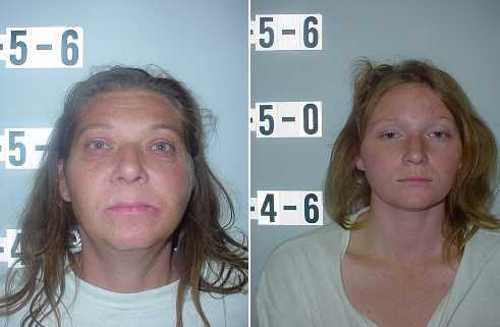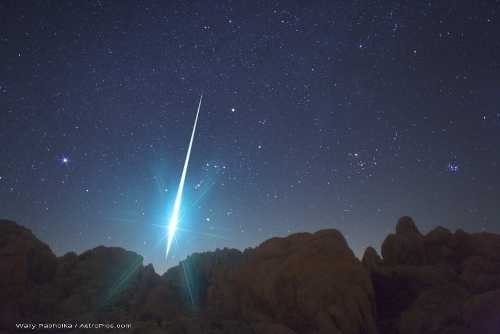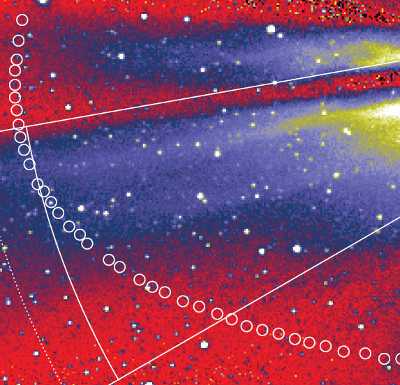
John-Wesley Davis returns an interception to the Salesian 29-yard line in the fourth quarter of the North Coast Section Division 4 title finals in Saturday, December 11, 2010, in Martinez, Calif. Photo by Ed Oswalt.
MARTINEZ, Calif. – The Middletown Mustangs held an imposing 21-7 lead with eight minutes left in the fourth quarter of the North Coast Section (NCS) Division IV final in Martinez Saturday night, but couldn’t hold on and ultimately lost to the Salesian Pride 28-21 in overtime.
It was the second year in a row the Mustangs lost their final game in overtime.
“Another heartbreaker,” Mustangs Head Coach Bill Foltmer said about the loss, “and it seems like we’re the ones that have been coming up on the short end of the stick here.”
For the first three quarters, the NCS final was dominated by defensive play on both sides – a very different scenario from Middletown’s season opener, when these two teams last played each other.
“When you look back at that game, both of our defenses were terrible,” Pride head coach Chad Nightingale said about their previous encounter. “One thing that’s really happened (since then) is both of our defenses have gotten a heck of a lot better.”
That was certainly true of the Mustangs, when they used their resolute defensive skills to stop an impressive 13-play, 65-yard Salesian opening drive at their own 14-yard line.
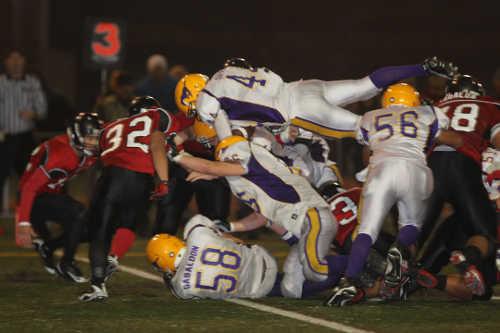
Jake Davis takes to the air on a one-yard touchdown leap, bringing Middletown even at 7-7 in the second quarter of the North Coast Section Division 4 title finals in Saturday, December 11, 2010, in Martinez, Calif. Photo by Ed Oswalt.
But the Pride is a well-rounded team with a potent offense that includes a mix of solid running coupled with precision passing from quarterback Ikaika Woolsey, and they weren’t denied on their second possession when running back Aaron Prier took it in from four yards out to give Salesian a 7-0 lead.
“Well, you could see how athletic that team was,” Foltmer said about the Pride. “They’re running every formation at you, and they’re motioning this and that.”
After Jereomy Hoefer carried the ensuing Salesian kickoff 63 yards downfield to the Pride 30-yard line, the Mustangs rallied behind the lengthy runback to score their first touchdown of the game, capped by a one-yard Jake Davis airborne dive above the goal-line pile.
With staunch defense on both ends, the score stood tied at 7-7 until the third quarter.
That’s when the Mustangs took the lead on a run-only drive from their two powerful backs, Davis and David Pike, and Davis scored his second touchdown of the night, this time from two yards out.
Middletown held the 14-7 lead going into the fourth quarter, until John-Wesley Davis picked off an errant Woolsey pass and ran it back to the Salesian 30-yard line.
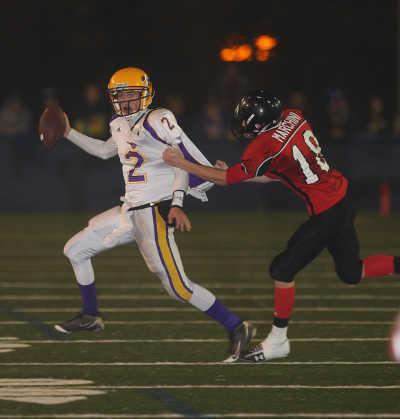
Middletown quarterback Kyle Brown evades Salesian's Joey Marchini in the third quarter of the North Coast Section Division 4 title finals in Saturday, December 11, 2010, in Martinez, Calif. Brown completed 6 passes in 12 attempts. Photo by Ed Oswalt.
The Mustangs need just two plays – a 29-yard run from Hoefer and a 1-yard push from Jake Davis for his third touchdown of the game – to take advantage of the Salesian turnover.
With just eight minutes left in the game and having scored the last two touchdowns, Middletown seemed firmly in control and on their way to winning the title championship.
“We had momentum, we were up by 14 points,” Foltmer said about the lead.
But the feeling was short-lived, and the momentum quickly shifted.
Salesian’s Marcial Malic took the subsequent Danny Cardenas kickoff 53 yards downfield to the Mustang 39-yard line, and after a 15-yard personal foul against Middletown’s Luke Parker was added, the Pride started the drive needing only 24 yards to score.
And score they did, just three plays later, on a four-yard carry from Prier.
“More than anything else, our kids didn’t quit,” Nightingale said about his team. “I didn’t need a Vince Lombardi speech when we were down 21-7. They were successful because they believed they could be successful.”

Salesian's scrambling senior quarterback Ikaika Woolsey completed 14 of 20 passes and ran for 68 yards in the North Coast Section Division 4 title finals in Saturday, December 11, 2010, in Martinez, Calif. Photo by Ed Oswalt.
After stopping the Mustangs with a three-and-out, Salesian needed just nine more plays on their next drive to tie the score at 21-all with a one-yard quarterback keep from Woolsey and just 1:51 left on the clock.
“Once the momentum goes away from you, there’s not anything you can do,” Foltmer said about the forth quarter Salesian rally. “And you could see it in our kids.”
The 21-21 tie score held until regulation play ended, when the NCS uses what is commonly referred to as a “Kansas tiebreaker” for overtime games, where both teams receive the ball on the opponent’s 10-yard line and have just four plays to score a touchdown followed by a point after attempt.
The Pride won the coin toss, elected to start on offense, scored in the air on their first play – a 10-yard bullet from Woolsey to Davion Mize – and added the extra point.
“Now the Middletown kids,” Nightingale said about scoring first in overtime, “you know their stomachs are a little bit tighter because they’ve got to make sure they score to equal.”
Trailing 28-21, the Mustang’s overtime got off to a rocky start with a five-yard false start penalty, and they were unable to make up the yardage needed to convert the touchdown.

Jereomy Hoefer's 28 yard run to the one-yard line led to Jake Davis's third touchdown of the game and gave Middletown a 21-7 lead with 8:17 remaining during the North Coast Section Division 4 title finals in Saturday, December 11, 2010, in Martinez, Calif. Photo by Ed Oswalt.
“What everyone always says is ‘defense wins championships’,” Jake Davis said about the overtime loss. “They stopped us for that last touchdown and we didn’t stop them, so their defense won the championship.”
“Hats off to Bill Foltmer and his staff – a great Middletown team, and a great group of seniors led by Jake Davis,” Nightingale said about the Mustangs.
“I don’t think anybody thought anything other than the fact that Middletown would be the toughest game we would play all year long.” Nightingale continued. “That’s a great team, that’s a great staff and we didn’t expect anything different.”
“It was a heartbreaker, wasn’t it?” Foltmer said about the overtime loss. “It’s like it’s there, and you’re reaching for that and then – boom – it’s just sucked away.”
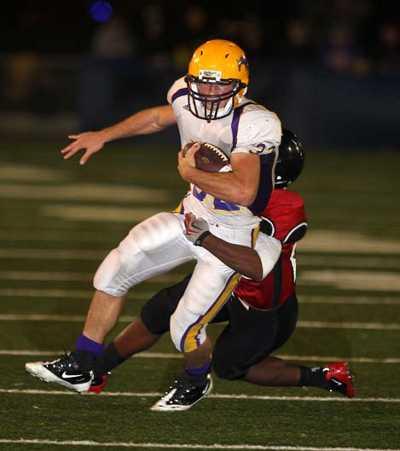
David Pike led Middletown with 75 yards rushing in the North Coast Section Division 4 title finals in Saturday, December 11, 2010, in Martinez, Calif. Photo by Ed Oswalt.
Foltmer continued: “For me, I couldn’t be prouder of these kids. I think the mark of a coach is, ‘Did your kids play hard for you?’ And these kids played their hearts out for me, so there’s really no negatives for me to say about anything in this game.”
“I feel bad for the kids, I feel bad for the community,” Foltmer lamented. “All the people that drove an hour and 45 minutes here – the place was packed with Middletown fans, they threw a little breakfast for us before we got on the bus, people were lined on the street when we left town – I mean, I couldn’t ask for more support from our community.”
“I feel like, God, we just let this opportunity slip away from us,” he said.
Follow Lake County News on Twitter at http://twitter.com/LakeCoNews , on Facebook at http://www.facebook.com/pages/Lake-County-News/143156775604?ref=mf and on YouTube at http://www.youtube.com/user/LakeCoNews .

Salesian's Joey Marchini dives to the one yard line on a 23-yard pass play with with 2:24 left, setting up the Pride's tying touchdown during the North Coast Section Division 4 title finals in Saturday, December 11, 2010, in Martinez, Calif. Photo by Ed Oswalt.

Ultimately, it was the Salesian Pride of Richmond celebrating the North Coast Section Division 4 title after a 28-21 overtime win over Middletown on Saturday, December 11, 2010, in Martinez, Calif. Photo by Ed Oswalt.












